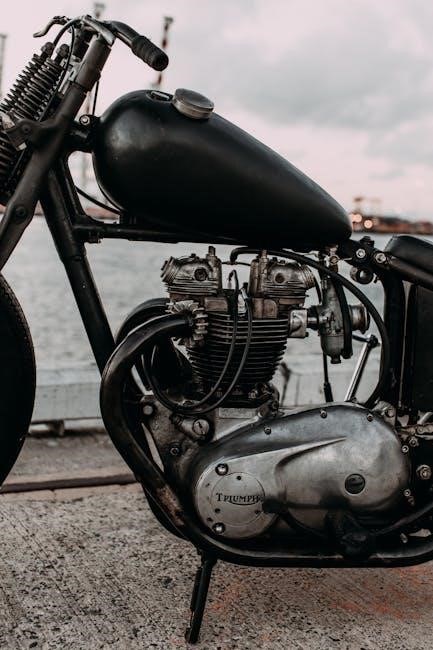
Firearm safeties are critical for preventing accidental discharges, with manual and trigger safeties being the primary mechanisms. Manual safeties are physical levers, while trigger safeties rely on trigger mechanics, offering an additional layer of security. The debate between the two often centers on personal preference, situational needs, and design philosophy.
1.1 Understanding the Basics of Firearm Safeties
Firearm safeties are mechanisms designed to prevent accidental discharges. Manual safeties are physical levers that block the firing mechanism, requiring deliberate action to disengage. Trigger safeties, often integrated into the trigger, ensure the firearm only fires when the trigger is intentionally pulled. Both systems aim to enhance safety, but their designs and operations differ, catering to various user preferences and operational needs in different scenarios.
1.2 Importance of Safety Mechanisms in Modern Firearms
Safety mechanisms are vital in modern firearms to prevent accidental discharges, ensuring user and bystander safety. They provide an additional layer of control, reducing the risk of negligent discharges. These features are especially crucial in high-stress situations, where fine motor skills may be compromised. Both manual and trigger safeties play a significant role in enhancing firearm reliability and user confidence, making them indispensable in today’s firearms.
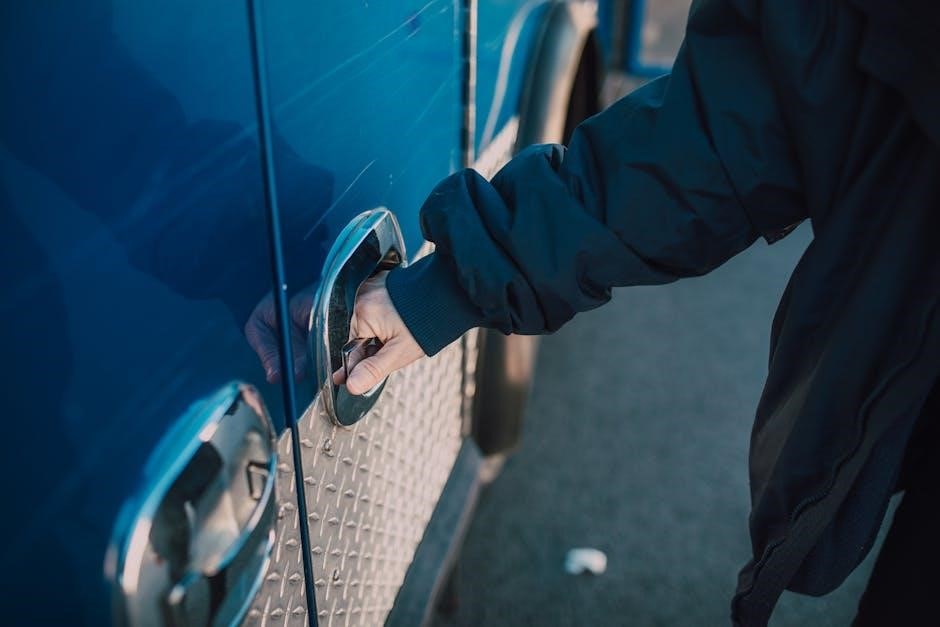
Definition and Function of Manual Safety
A manual safety is a physical mechanism on a firearm that prevents the gun from firing when engaged. It adds an intentional step to discharge, enhancing control and safety.
2.1 What is a Manual Safety?
A manual safety is a physical mechanism on a firearm that prevents accidental discharge. Typically located on the side or frame, it must be deliberately disengaged to allow firing. This feature adds a layer of intentional control, requiring the user to consciously move the lever, enhancing safety, especially during handling or holstering. It is often preferred for its tangible, reassuring presence.
2.2 How Manual Safety Operates
A manual safety operates by physically blocking the firearm’s action or trigger mechanism when engaged. Located on the side or frame, it must be deliberately moved to the “off” position to allow firing. This intentional action prevents accidental discharges, especially during handling or holstering. However, it requires conscious engagement, which may introduce delays in high-stress situations if not properly trained.
2.3 Historical Development of Manual Safeties
Manual safeties originated in early firearm designs to prevent accidental discharges. They became standard in pistols like the M1911, requiring a deliberate action to disengage. Initially, they were essential for “cocked and locked” carry, where a holstered gun could be quickly readied. Over time, designs evolved, but manual safeties remained popular for their tactile feedback and added layer of control, despite the rise of trigger-only safety systems in modern firearms.
Definition and Function of Trigger Safety
Trigger safety is a mechanism preventing the firearm from discharging unless the trigger is intentionally pressed, enhancing accidental discharge prevention through direct trigger interaction and design.
3.1 What is a Trigger Safety?
A trigger safety is a mechanism designed to prevent accidental discharges by ensuring the firearm only fires when the trigger is intentionally pressed. It often involves a component within or on the trigger that blocks movement unless deliberately activated. Unlike manual safeties, trigger safeties are typically integral to the trigger itself, requiring no manual activation. This design enhances safety by preventing unintended firing from external objects or pressure. Trigger safeties are commonly found in modern striker-fired pistols.
3.2 Mechanism of Trigger Safety
A trigger safety operates by incorporating a mechanism that blocks the trigger’s movement unless intentionally activated. This is often achieved through a safety lever or blade within the trigger shoe. When pressed correctly, the safety disengages, allowing the trigger to function. Some systems reset automatically after the trigger is released, ensuring continuous safety. This design prevents accidental discharges caused by external pressure or objects, enhancing overall firearm safety.
3.3 Evolution of Trigger Safety Systems
Trigger safety systems have evolved significantly, from early designs focusing solely on preventing accidental discharges to modern, sophisticated mechanisms. Innovations include integrated safety blades and striker-fired designs that eliminate the need for manual safeties. These advancements enhance reliability and user safety without compromising functionality. The integration of trigger safeties into striker-fired pistols has become a standard, reflecting their effectiveness in preventing negligent discharges while maintaining a seamless shooting experience.
Pros and Cons of Manual Safety
Manual safeties offer an extra layer of security, reducing accidental discharges and providing reassurance for concealed carry users. However, they can delay response times in emergencies and require training to use effectively, making them less ideal for stress-induced situations where quick access is crucial.
4.1 Advantages of Manual Safety
Manual safeties provide an additional layer of security, reducing the risk of accidental discharges. They offer a tactile confirmation of the firearm’s status, ensuring users know when the weapon is ready to fire. This feature is particularly beneficial for concealed carry, as it adds reassurance against unintended trigger engagement. However, the manual safety requires deliberate action, which can delay response times in high-stress situations, making it a double-edged feature that demands proper training and muscle memory.
4.2 Disadvantages of Manual Safety
Manual safeties can introduce delays in high-stress situations, as they require deliberate action to disengage. This can hinder quick response times, especially for inexperienced users. Additionally, the reliance on muscle memory to engage or disengage the safety can be a drawback, as it demands consistent training and practice. Some shooters also find the extra step cumbersome, particularly in dynamic scenarios where split-second decisions are critical.

Pros and Cons of Trigger Safety
Trigger safety prevents accidental discharges without manual intervention, offering reliability in high-stress situations. However, some users find it less intuitive compared to manual safeties in certain scenarios.
5.1 Advantages of Trigger Safety
Trigger safety ensures accidental discharges are minimized by requiring intentional trigger pull, enhancing security. It streamlines operation, eliminating the need to manipulate a manual lever, which is crucial in stressful situations. This design is highly effective in preventing unintended firings caused by external objects, making it a reliable choice for concealed carry and tactical use. Its simplicity reduces training time, focusing on instinctive handling.
5.2 Disadvantages of Trigger Safety
Trigger safety relies on proper mechanics, and failure can lead to unintended discharges. It may not prevent accidental firing if foreign objects engage the trigger. Some users find the heavier or longer trigger pull less desirable. Relying solely on trigger safety can lead to complacency, and in high-stress situations, fine motor skills may degrade, potentially affecting operation. It requires consistent training to ensure reliability and safe handling.

Design and Functional Differences
Manual safeties are physical levers, often requiring deliberate action, while trigger safeties are integrated into the trigger mechanism, preventing discharge unless intentionally pressed. Design differences impact usability and preference in various scenarios.
6.1 Comparison of Design Elements
Manual safeties are typically levers on the firearm’s side, requiring deliberate activation, while trigger safeties are integrated into the trigger mechanism. Manual safeties often feature tactile feedback, ensuring users know their status, and are usually ambidextrous. Trigger safeties, however, rely on internal mechanisms that prevent accidental discharge unless the trigger is intentionally pressed. These design differences significantly impact ergonomics, accessibility, and overall user interaction with the firearm.
6.2 Functional Differences in Real-World Scenarios
Manual safeties provide an additional physical barrier against accidental discharges, offering a tactile confirmation of the firearm’s status. Trigger safeties, however, rely on mechanical engagement, reducing the risk of unintended activation without requiring manual intervention. In high-stress situations, manual safeties may require deliberate disengagement, potentially slowing response times, while trigger safeties allow for faster deployment. These differences significantly impact utility in concealed carry, home defense, and tactical environments.
Manual Safety vs Trigger Safety: User Preferences
Preferences vary widely, with some prioritizing manual safeties for added security, while others favor trigger safeties for simplicity and faster deployment in high-stress situations.
7.1 Popularity Among Concealed Carry Users
Concealed carry users often prefer trigger safeties for their simplicity and ease of use, as they eliminate the need to manipulate a manual lever. However, some advocates of manual safeties argue that they provide an additional layer of security, particularly in high-stress situations or during weapon retention scenarios. The choice largely depends on personal comfort, training, and specific carry requirements, with no clear consensus in the community.
7.2 Preferences in Competitive Shooting
In competitive shooting, trigger safeties are often preferred due to their seamless integration with the shooting process, allowing for faster and smoother operations. Manual safeties, while offering an extra layer of control, can introduce delays during high-speed drills. Many competitors value the simplicity and reliability of trigger safeties, which align well with the precision and speed required in competitive environments. This preference underscores the importance of ergonomics and instinctive handling in performance shooting sports.
Training and Muscle Memory
Manual safeties require deliberate practice to ensure proper engagement, while trigger safeties rely on instinctive handling. Consistent training is essential for both to build reliable muscle memory.
8.1 Impact of Manual Safety on Training
Manual safeties require deliberate practice to ensure proper engagement and disengagement, especially under stress. This necessitates repetitive training to build muscle memory, ensuring the safety is intuitively managed during high-pressure situations. Proper techniques must be ingrained to avoid accidental discharges or delays in response. Consistent training is crucial to mastering manual safety operation effectively in real-world scenarios.
8.2 Training Requirements for Trigger Safety
Training for trigger safety focuses on understanding its integrated design, emphasizing proper trigger discipline and safe handling. Users must learn to avoid unintended trigger pulls, as trigger safeties rely on intentional activation. Drills and consistent practice are essential to build habits that prevent accidental discharges, ensuring safe and responsible firearm use.
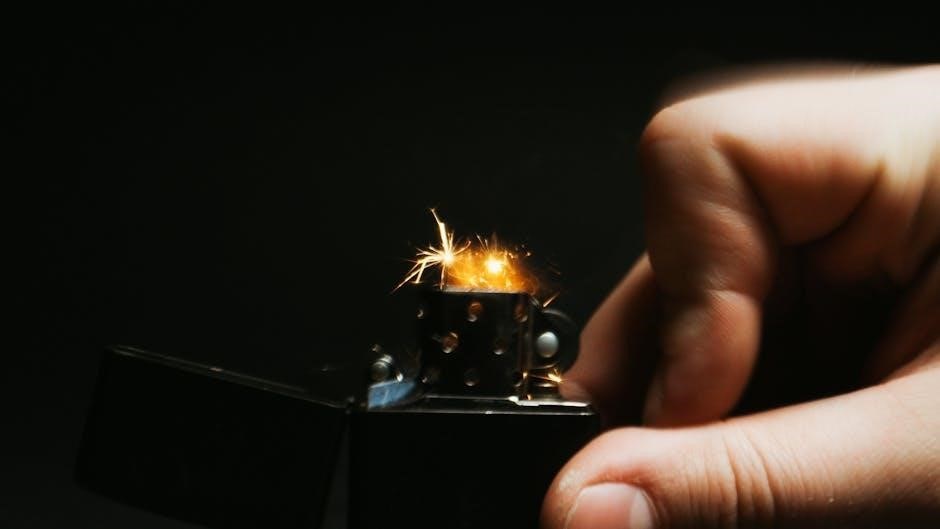
Concealed Carry Considerations
Concealed carry requires careful consideration of safety mechanisms. Manual safeties offer an additional layer of protection, while trigger safeties rely on intentional activation, balancing ease and security.
9.1 Manual Safety in Concealed Carry
A manual safety provides an additional layer of security for concealed carry, offering peace of mind by preventing accidental discharges. It can be particularly beneficial in close-quarters situations or if the firearm is grabbed by an assailant. However, it requires consistent training to ensure the safety is disengaged quickly during a threat, making it a matter of personal preference and situational awareness for carriers.
9.2 Trigger Safety in Concealed Carry
Trigger safeties are widely used in concealed carry firearms due to their simplicity and reliability. They eliminate the need for manual engagement, reducing the risk of failure under stress. However, they may not provide the same level of security as manual safeties in scenarios where external objects might inadvertently activate the trigger. This trade-off makes them a popular choice for their ease of use and intuitive design.
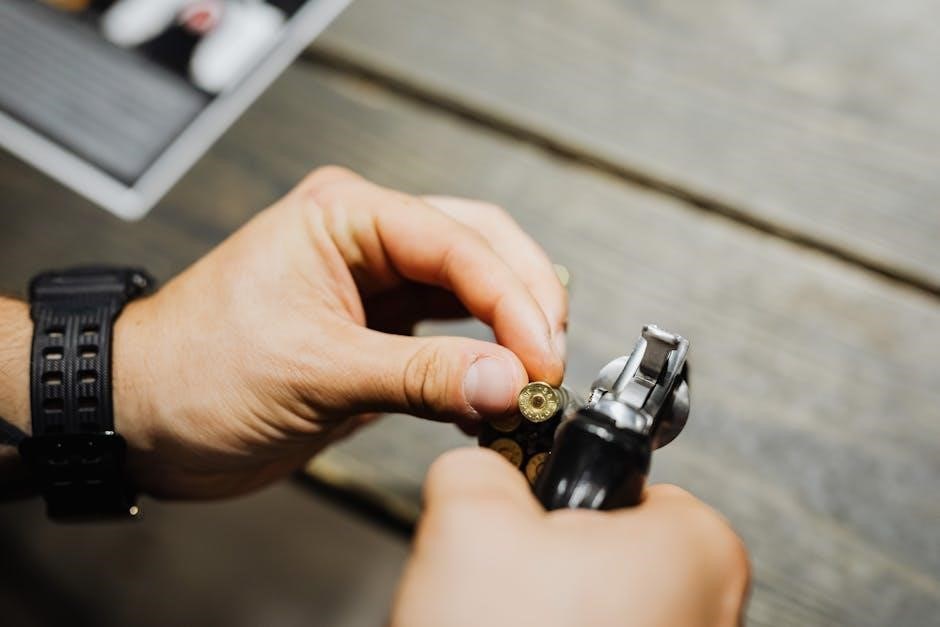
Home Defense and Tactical Use
Manual safeties add an extra layer of security, preventing accidental discharges in high-stress situations. Trigger safeties are preferred for their intuitive operation, ideal for tactical scenarios.
10.1 Manual Safety in Home Defense
A manual safety provides an additional layer of security during home defense, preventing accidental discharges in high-stress scenarios. Users can ensure the firearm is ready only when intended, reducing risks of negligent discharge. This feature is particularly beneficial in chaotic situations, offering peace of mind and control. However, it requires consistent training to ensure quick and intuitive operation during emergencies.
10.2 Trigger Safety in Tactical Scenarios
Trigger safeties excel in tactical scenarios due to their intuitive design, eliminating the need to manipulate a manual lever during high-stress situations. This streamlined operation allows for faster drawing and targeting, crucial in life-threatening encounters. The consistent trigger pull also enhances accuracy under pressure. While relying solely on the trigger mechanism, modern designs ensure safety, making them a preferred choice for professionals who prioritize both reliability and tactical efficiency.

The Debate in the Firearms Community
The firearms community is divided, with some preferring manual safeties for added security and others favoring trigger safeties for simplicity and ease of use during stress.
11.1 Arguments in Favor of Manual Safety
Proponents argue that manual safeties provide an additional layer of protection, reducing accidental discharges, especially during holstering or physical altercations. They emphasize control, as the safety lever must be deliberately disengaged, offering a clear tactile indicator of the firearm’s readiness. This feature is particularly valued in concealed carry and home defense scenarios where mishandling could lead to negligent discharges.
11.2 Arguments in Favor of Trigger Safety
Advocates of trigger safeties highlight their simplicity and reliability, as they eliminate the need for manual engagement, reducing the chance of forgetting to disengage a safety in high-stress situations. Trigger safeties are intuitive, requiring only a deliberate trigger pull to fire, making them user-friendly for both experienced shooters and novices. This design enhances operational fluidity in critical scenarios, such as self-defense, where speed and instinctive action are crucial.

Legal and Liability Considerations
Manual and trigger safeties impact legal liability differently, as their designs influence accidental discharge risks. Courts often assess negligence based on safety mechanisms and proper usage standards.
12.1 Legal Implications of Manual Safety
Manual safeties can reduce legal liability by providing an additional layer of control, minimizing accidental discharges. Courts may view manual safeties as a sign of responsible ownership, potentially mitigating negligence claims. However, improper use, such as failing to engage the safety, could lead to legal consequences. Proper training and adherence to safety protocols are crucial to avoid liability issues.
12.2 Legal Implications of Trigger Safety
Trigger safeties are designed to prevent accidental discharges, potentially reducing legal liability in cases of unintended firing. Their passive nature ensures the firearm only fires when intended, lowering the risk of negligence claims. However, reliance on trigger safeties alone may not fully absolve owners of liability if improper handling occurs. Courts often consider the design and functionality of trigger safeties in determining responsibility.
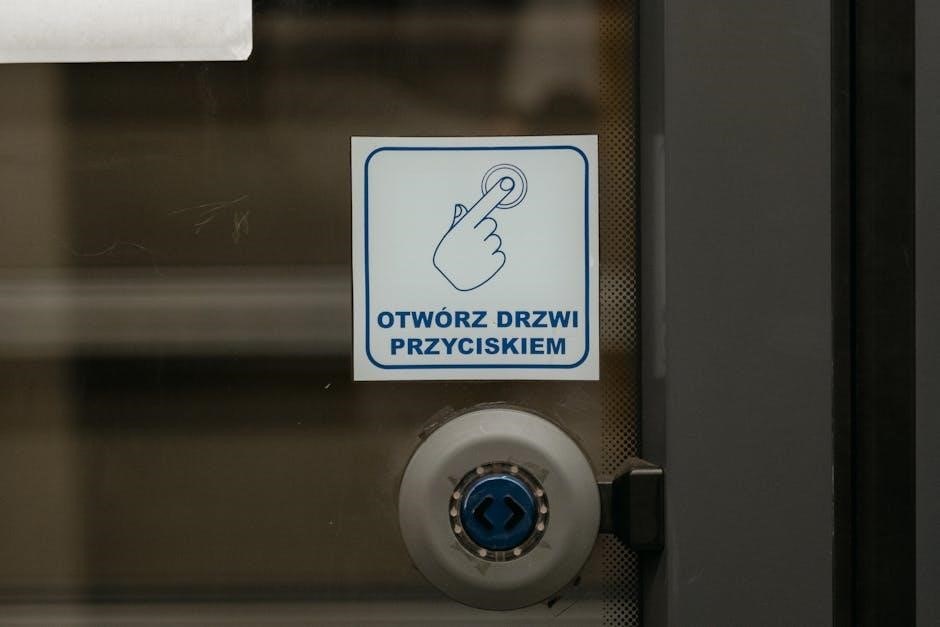
Manufacturer Trends
Modern firearm manufacturers increasingly blend manual and trigger safeties, catering to diverse preferences. Some focus on trigger safeties for simplicity, while others offer manual safeties for added control.
13.1 Trends in Manual Safety Firearms
Manual safety firearms remain popular, with manufacturers incorporating ergonomic designs for easier engagement. These safeties often appear on pistols like the 1911, AR-15 platforms, and some concealed carry models. Users value the tactile feedback and additional security layer. However, striker-fired pistols increasingly favor trigger safeties, leading manual safeties to niche markets, such as competitive shooting or tactical use.
13.2 Trends in Trigger Safety Firearms
Trigger safety firearms, particularly striker-fired pistols, dominate modern markets. Integrated into the trigger, they eliminate the need for a manual lever, offering a sleek design. This trend is driven by demand for concealed carry and self-defense weapons. Trigger safeties are prized for their intuitive operation, requiring no manual activation, thus streamlining handling. Their popularity stems from reliability and simplicity, appealing to shooters seeking effortless, secure firearms.
Personal Preference and Comfort
Personal preference and comfort play a significant role in choosing between manual and trigger safeties. Shooters often prioritize what feels natural and intuitive for their specific needs and habits.
14.1 Role of Personal Preference in Safety Choice
Personal preference significantly influences the choice between manual and trigger safeties. Some users value the tangible control of a manual safety, while others prefer the simplicity and spontaneity of trigger safeties. This decision often reflects individual comfort, shooting style, and situational requirements, making it a deeply subjective aspect of firearm selection and use.
14.2 Comfort and Ergonomics in Safety Mechanisms
Comfort and ergonomics play a crucial role in choosing between manual and trigger safeties. Manual safeties offer a tactile control that some users find intuitive, while trigger safeties provide a streamlined design that eliminates the need for extra levers. The ease of use and natural feel of each mechanism can significantly impact a shooter’s performance and confidence, making ergonomic design a key factor in safety choice.
The debate between manual and trigger safeties centers on personal preference, situational needs, and design philosophy, emphasizing safety, reliability, and user comfort in firearms handling.
15.1 Summary of Key Points
Manual and trigger safeties offer distinct approaches to firearm safety. Manual safeties provide an extra layer of security, requiring deliberate activation, while trigger safeties rely on mechanism design to prevent accidental discharge. The choice often comes down to personal preference, situational needs, and the user’s comfort with the firearm’s operation. Both systems aim to enhance safety, but their designs cater to different priorities and shooting scenarios.
15.2 Final Thoughts on Manual vs Trigger Safety

Additional Resources
Explore recommended books, online forums, and communities for deeper insights into manual and trigger safeties. Visit websites like EnglishOverview.com for comprehensive guides and discussions.
16.1 Recommended Reading
For in-depth understanding, explore books like “The Truth About Gun Safety” and “Firearm Safety Mechanics.” Online forums such as EnglishOverview.com offer detailed discussions and guides. These resources provide practical insights and expert opinions, helping you make informed decisions about manual and trigger safeties. They cover historical development, design comparisons, and real-world applications, ensuring a well-rounded perspective on firearm safety mechanisms.
16.2 Online Communities and Forums
Engage with online forums like Reddit’s r/firearms and specialized communities on Facebook, such as Top Guns, for discussions on manual and trigger safeties. These platforms host debates, personal experiences, and expert advice, offering diverse perspectives. Users share insights on concealed carry, home defense, and training tips, making them invaluable resources for understanding modern firearm safety mechanisms and their practical applications in various scenarios.